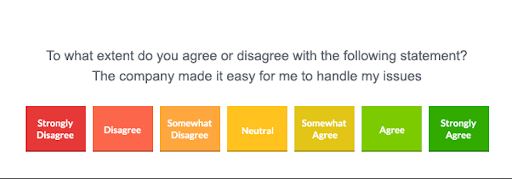Imagine you walk into a customer service team meeting and you hear the manager say-
“How are we performing? How many issues are we resolving daily? I need the numbers. Give me Data, Data, Data!”
And you think to yourself …
But why? Why data? Aren’t customer service professionals just supposed to have people skills for making customers happy?
Good question!
Just like any other business department, customer service teams rely on customer service reports- the numbers that are worth a thousand words.
Customer service reports give you a bird’s eye view of the pertinent processes that support the department, allowing you to formulate the right strategies and achieve the top goal- delighted customers.
Read this blog to learn about the various benefits of customer service reports and explore the key customer service metrics your business needs to track today.
What Is A Customer Service Report?
Although customer service thrives on human connections and personalized experiences; elevating average customer service to exceptional only takes place when you know your numbers better than anyone else.
“In God we trust; all others must bring data.”
– W. Edward Deming
A customer service report offers invaluable data and insights about your customer service operations. With the help of the right data at your fingertips, you can make informed business decisions and alter your strategies. Here are some important things that you can achieve with the right customer service reports.
- Service reports allow you to measure individual as well as team performance
- Provides managers and executives with real-time information
- Allows you to determine the key performance indicators (KPIs) of your service operations
- Helps you measure customer satisfaction and loyalty
Now, let us understand these benefits in detail.
What Are the Benefits Of Customer Service Reports?
#1. Understand Customer Pain Points
Every customer service team has their mind wrapped around this question- What are the biggest challenges our customers face?
Pain points, if left unattended, can lead to customer churn.
With in-depth reporting, you can easily identify the top pain points of your customers. For instance, let’s say your company launched a new mobile app in the market and unfortunately the app wasn’t received well.
Your service team is going to get bombarded with numerous help requests, complaints, and negative feedback. How does reporting help here? Reports can help you identify top or common customer issues. If 80% of people complain that they have a hard time downloading updates of your mobile application, you clearly have discovered a pain point.
#2. Identify & Reward Your Top Performers
Do you often have a hard time identifying your top performers? With data analysis and reporting, you can evaluate agent performance scores and see which agents perform best in which areas.
The secret to customer happiness lies in the hands of your customer service reps.
By identifying your top performers, you can encourage your agents to deliver superior services and set the right example for everyone. It’s always a great idea to have an incentive plan for those who consistently meet or exceed their targets. Incentives may include cash bonuses, discounts, additional paid vacation time, or simply prizes such as gift cards or other useful products.
#3. Make Decisions That Are Backed by Data
While there are many influences when making any business decision- market trends, the costs, your gut–there is nothing as persuasive as having profound data to back you up.
Making a decision without data is like taking a shot with both eyes closed.
Now, there are many questions customer service teams seek answers to.
- Which support channels do our customers prefer?
- How can we reduce customer support costs?
- How do we improve our average resolution time?
- What key customer service metrics should we measure?
Customer service reports can help you unlock the right answers and make business decisions backed by data. For instance, you can identify the support channel used by maximum customers and then allocate your agents accordingly. If the majority prefer the live chat platform to reach you, you can subsequently grow your live chat team to meet the demand.
Read Also: 10 Ways Technology Will Affect the Future of Customer Service
#4. Improve Customer Retention & Loyalty
Like it or not, but reports and analytics can shed light on the areas that your business falls short on.
Data always reveals the truth; Numbers never lie!
But what happens when you actually take time to understand your shortfalls, work on your improvement areas, and finally, offer exceptional customer service?
You get rewarded with a loyal customer base. Customers who would choose your awesome service over hundreds of competitors in the market. According to a Microsoft report, 96% of consumers say customer service is an important factor in their choice of loyalty to a brand.
Therefore, tapping into the full potential of customer service data can help you improve your customer retention rate.
Read Also: How to Build a Customer Loyalty Program
Types of Customer Service Reports
1. Customer Service Reports For Team Performance

Here are some team-focussed customer service metrics you need to track.
- Ticket Backlog
Ticket backlog refers to customer support requests that have been left unresolved for a particular time period. These tickets usually remain unresolved due to high ticket volume or increased time spent on resolving complex issues. The goal should be to keep the number of unresolved tickets to a bare minimum.
- Average Resolution Time
Average resolution time depicts the median time it takes by your service team to resolve customer issues. However, it is important to note that the ‘average resolution time’ is different from the ‘average response time’ as the latter is focussed on response shared instead of a complete resolution. A short resolution time is a sign of an effective support process and top performing agents.
- First Contact Resolution
First contact resolution (FCR) identifies the number of customer issues that were resolved right after the first contact, without subsequent interactions. Now, not every customer issue can be resolved during the first contact as customers might have follow-up-questions or your agents might need more information. Improving FCR will lead to happier customers and allow your agents to devote more time to challenging issues.
- Top Agents
As discussed above, customer service reports can help you identify your top agents based on performance. The criteria for choosing your top agents can differ for different customer service teams. For instance, when we talk about phone support, a top performing agent would be the one who handles maximum calls in a given time period.
Read Also: How to Analyze Agent Performance
2. Customer Service Reports for Customer Satisfaction
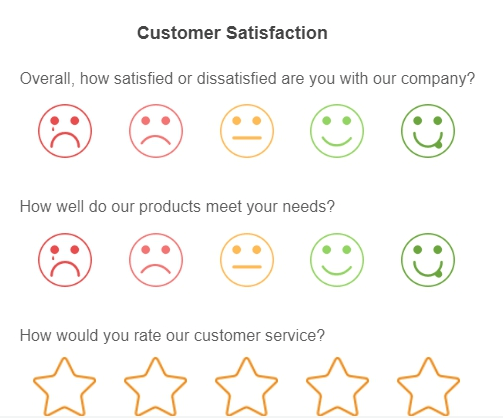
Here are some of the top customer service metrics (KPIs) you need to track.
- Customer Satisfaction Score (CSAT)
Customer satisfaction (CSAT) is the most popular key performance indicator (KPI) used to measure how satisfied customers are with your organization’s products and/or services.
For this, you can share a customer satisfaction survey with your customers and analyze the feedback to understand what’s working for your customers and what’s not. Here is the formula to calculate CSAT score-
(Number of satisfied customers (4 and 5) / Number of survey responses) x 100 = % of satisfied customers
Read Also: Best Practices for Designing Customer Satisfaction Surveys
- Net Promoter Score (NPS)
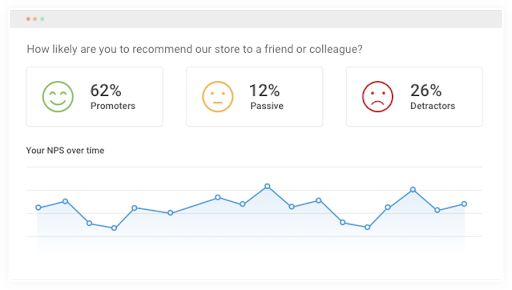
NPS (Net Promoter Score) measures how likely your customers are to recommend your product/service to others. Many businesses share NPS surveys with their customers and categorize them as promoters, passives, and detractors.
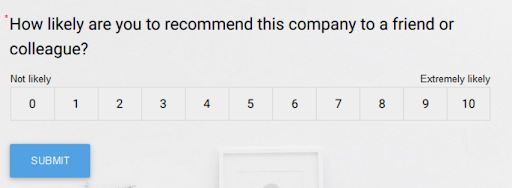
Promoters: Customers who selected 9 or 10.
Passives: Customers who selected 7 or 8.
Detractors: Customers who selected between 0-6.
NPS is calculated by subtracting the percentage of promoters with the percentage of detractors. NPS can help you identify your loyal customers who are willing to recommend your business within their social circles.
- Customer Effort Score (CES)
Customer Effort Score (CES) is a popular customer service metric that measures how easy it is for a customer to engage with your business. When customers are required to put the minimum efforts while interacting with your business, they are more likely to have a seamless and delightful experience.
Can a Help Desk ‘Help’ With Reporting?
Yes, absolutely!
Just like most customer service tools, a help desk software can offer rich insights into your customer service performance. For instance, ProProfs Help Desk offers three different types of reports: summary reports, agent reports, and rating reports, that can together help you see the bigger picture. Let’s see how.
- Summary Reports
Summary reports give you a quick overview of the total number of new support tickets in comparison to replied and unresponded tickets.
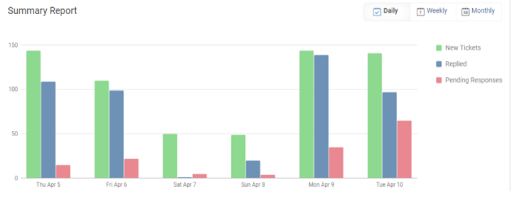
- Agent Reports
With agent reports, you can access specific individual reports and analyze their performance against key SLAs.

- Rating Reports
You can check all your rated customer support tickets under this section. You can easily see the rating offered to an agent by a customer and their valuable feedback.
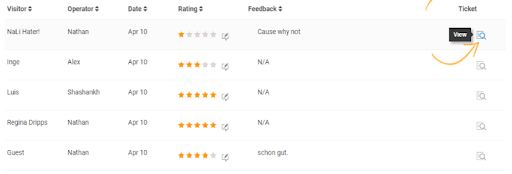
Ready to Make Data-Driven Decisions?
If you look closely, data is everywhere. And all of that data is filled with insights about your company’s potential and holds the secret to customer happiness. With the help of customer service reports, you can tap into the full potential of reporting and make informed business decisions.
Customer Service Reports —-> Informed Decisions —-> Happy Customers
Now, if you are looking for an easy way to generate insightful reports, then a customer service tool can help. ProProfs Help Desk allows you to collect data on your customers, generate reports, conduct analysis, and take quick action to improve the overall customer service experience.
FREE. All Features. FOREVER!
Try our Forever FREE account with all premium features!

